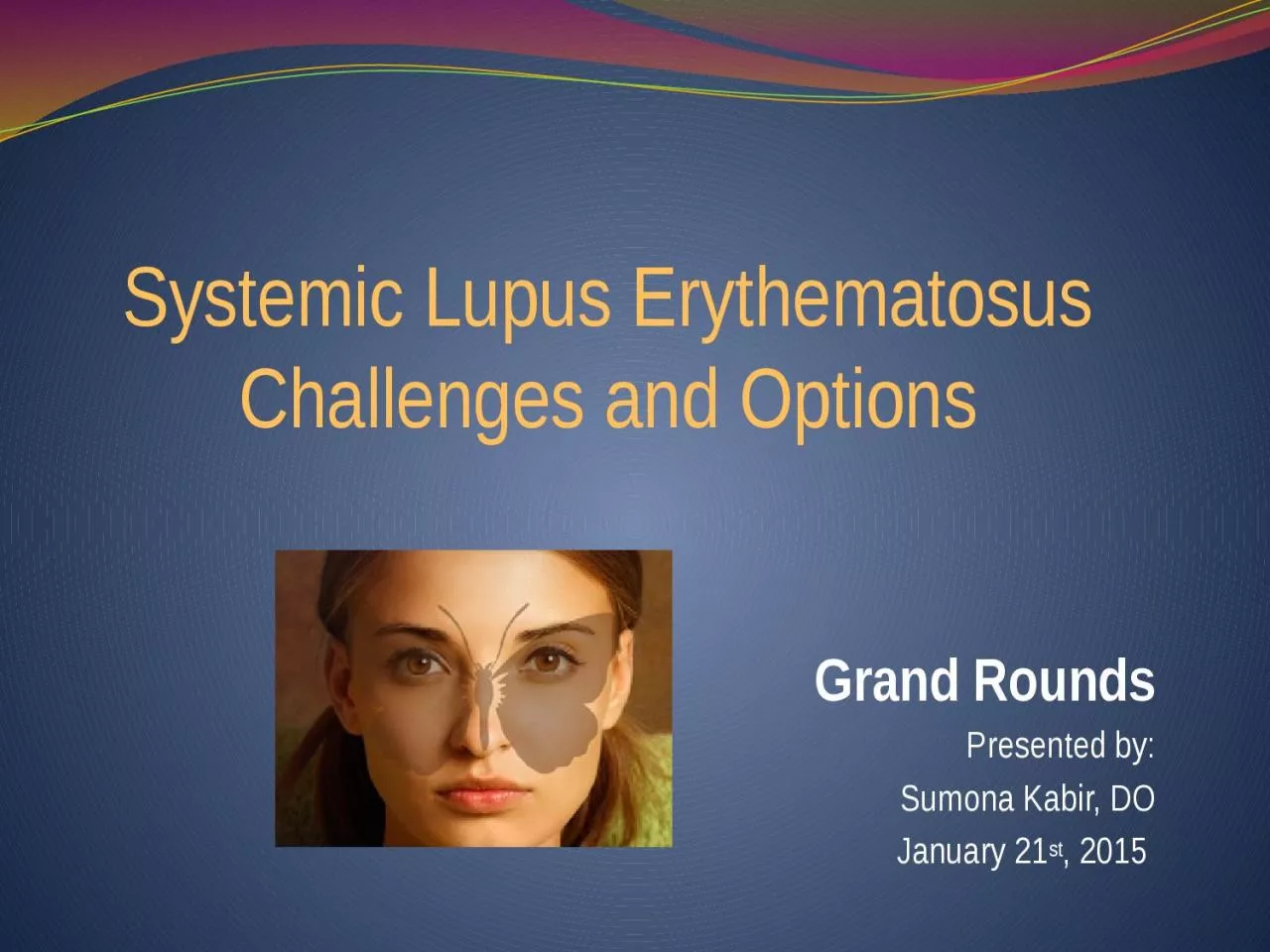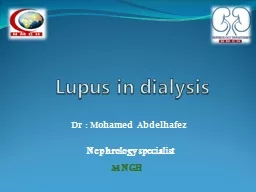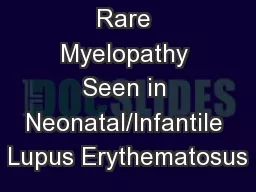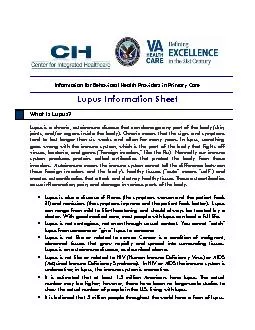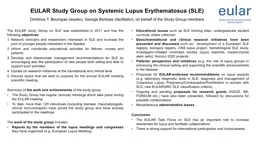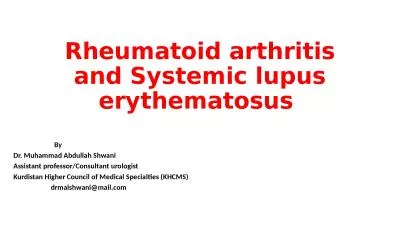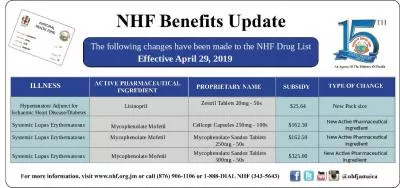PPT-Systemic Lupus Erythematosus Challenges and Options
Author : unisoftsm | Published Date : 2020-08-29
Challenges and Options Grand Rounds Presented by Sumona Kabir DO January 21 st 2015 Overview Case presentation Definition of SLE Pathophysiology Classification
Presentation Embed Code
Download Presentation
Download Presentation The PPT/PDF document "Systemic Lupus Erythematosus Challenges..." is the property of its rightful owner. Permission is granted to download and print the materials on this website for personal, non-commercial use only, and to display it on your personal computer provided you do not modify the materials and that you retain all copyright notices contained in the materials. By downloading content from our website, you accept the terms of this agreement.
Systemic Lupus Erythematosus Challenges and Options: Transcript
Download Rules Of Document
"Systemic Lupus Erythematosus Challenges and Options"The content belongs to its owner. You may download and print it for personal use, without modification, and keep all copyright notices. By downloading, you agree to these terms.
Related Documents

